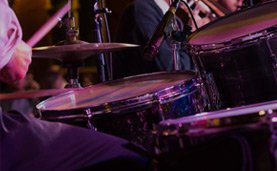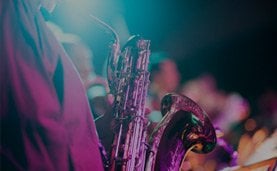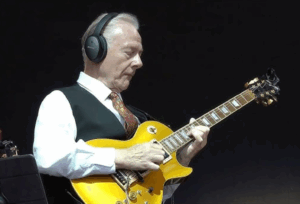15 of the Greatest Guitar Solos You’ll Agree With

via Roma Li / YouTube
Classic rock has given us some of the most memorable guitar solos in music history. These solos showcase the skill and creativity of the guitarists who played them. Let’s take a look at 15 solos that have left a lasting impression on fans and musicians alike.
15. “Highway Star” – Ritchie Blackmore (Deep Purple)
Ritchie Blackmore’s solo in “Highway Star” is a standout moment in Deep Purple’s catalog. Released in 1972 on the album Machine Head, the song features a fast-paced solo that blends classical influences with hard rock energy. Blackmore’s precise playing and rapid-fire notes make this solo a favorite among guitar enthusiasts.
The solo’s structure and execution demonstrate Blackmore’s technical prowess. His use of scales and arpeggios adds depth to the performance, making it both challenging and enjoyable to listen to. “Highway Star” remains a classic example of early ’70s rock guitar work.
14. “Texas Flood” – Stevie Ray Vaughan (Stevie Ray Vaughan and Double Trouble)
Stevie Ray Vaughan’s rendition of “Texas Flood” showcases his deep connection to the blues. The song, released in 1983, features a solo that is both expressive and technically impressive. Vaughan’s bending notes and smooth transitions highlight his mastery of the guitar.
The solo captures the emotion of the blues, with Vaughan’s playing conveying feelings of longing and resilience. His dynamic control and phrasing make this solo a standout in his career. “Texas Flood” continues to inspire guitarists around the world.
13. “Fade to Black” – Kirk Hammett (Metallica)
Kirk Hammett’s solo in “Fade to Black” reflects the song’s shift from mellow beginnings to intense climax. Released in 1984 on Metallica’s Ride the Lightning, the solo combines melodic lines with fast-paced runs. Hammett’s use of scales and vibrato adds depth to the performance.
The solo’s structure mirrors the song’s themes of despair and hope. Hammett’s playing transitions smoothly between clean and distorted tones, showcasing his versatility. “Fade to Black” remains a significant piece in Metallica’s discography.
12. “Tornado of Souls” – Marty Friedman (Megadeth)
Marty Friedman’s solo in “Tornado of Souls” is a highlight of Megadeth’s 1990 album Rust in Peace. The solo features complex phrasing and rapid alternate picking, demonstrating Friedman’s technical skills. His unique approach to melody sets this solo apart from others in the genre.
The solo’s composition blends aggression with musicality, reflecting the song’s intensity. Friedman’s ability to weave intricate lines into the song’s structure showcases his talent. “Tornado of Souls” is often cited as one of Megadeth’s finest guitar moments.
11. “Voodoo Child (Slight Return)” – Jimi Hendrix (The Jimi Hendrix Experience)
Jimi Hendrix’s solo in “Voodoo Child (Slight Return)” is a testament to his innovative guitar work. Released in 1968, the song features a solo that combines blues influences with psychedelic sounds. Hendrix’s use of the wah-wah pedal and feedback creates a distinctive tone.
The solo’s improvisational nature showcases Hendrix’s creativity and command of the instrument. His expressive playing style has influenced countless guitarists. “Voodoo Child (Slight Return)” remains a defining track in Hendrix’s career.
10. “Maggot Brain” – Eddie Hazel (Funkadelic)
Eddie Hazel’s solo in “Maggot Brain” is a powerful expression of emotion through guitar. The 1971 instrumental track features a ten-minute solo that conveys a range of feelings. Hazel’s use of sustain and phrasing creates a haunting atmosphere.
The solo’s minimalist backing allows Hazel’s guitar to take center stage. His ability to evoke emotion through his playing has earned “Maggot Brain” critical acclaim. The track is considered a landmark in psychedelic and funk music.
9. “Mr. Crowley” – Randy Rhoads (Ozzy Osbourne)
Randy Rhoads’ solos in “Mr. Crowley” showcase his blend of classical and metal influences. Released in 1980, the song features two solos that highlight Rhoads’ technical proficiency. His use of scales and arpeggios adds complexity to the performance.
The solos’ structure complements the song’s dark themes. Rhoads’ precise playing and innovative techniques have made “Mr. Crowley” a standout track in Ozzy Osbourne’s catalog. Rhoads’ contributions continue to influence metal guitarists.
8. “Whipping Post” (Live) – Duane Allman/Dickey Betts (The Allman Brothers Band)
The live version of “Whipping Post” features extended solos by Duane Allman and Dickey Betts. Recorded at the Fillmore East in 1971, the performance showcases their improvisational skills. The interplay between the two guitarists creates a dynamic and engaging experience.
The solos blend blues, jazz, and rock elements, reflecting the band’s diverse influences. Their ability to build tension and release through their playing has made this version of “Whipping Post” a classic live recording.
7. “Bohemian Rhapsody” – Brian May (Queen)
Brian May’s solo in “Bohemian Rhapsody” is a concise yet impactful moment in the song. Released in 1975, the solo bridges the ballad and hard rock sections. May’s melodic approach and tone add depth to the composition.
The solo’s phrasing complements Freddie Mercury’s vocal lines, enhancing the song’s emotional resonance. May’s use of harmonies and sustain demonstrates his musical sensibility. “Bohemian Rhapsody” remains one of Queen’s most celebrated tracks.
6. “Hotel California” – Joe Walsh/Don Felder (Eagles)
The dual guitar solo in “Hotel California” is a hallmark of the Eagles’ 1976 hit. Joe Walsh and Don Felder’s harmonized lines create a memorable conclusion to the song. Their interplay showcases their complementary styles.
The solo’s structure builds tension and release, enhancing the song’s narrative. The use of a double-neck guitar adds visual flair to live performances. “Hotel California” remains a staple in classic rock playlists.
5. “Free Bird” – Allen Collins/Gary Rossington (Lynyrd Skynyrd)
“Free Bird” features an extended guitar solo that has become iconic in rock music. Released in 1973, the solo showcases Allen Collins’ lead work, with Gary Rossington providing slide guitar. The solo’s gradual build-up leads to a high-energy climax.
The interplay between the two guitarists creates a dynamic and engaging performance. The solo’s length and intensity have made it a favorite among fans. “Free Bird” continues to be a highlight of Lynyrd Skynyrd’s live shows.
4. “The Sails of Charon” – Uli Jon Roth (Scorpions)
Uli Jon Roth’s solo in “The Sails of Charon” showcases his neoclassical guitar style. Released in 1977, the song features intricate phrasing and fast runs. Roth’s use of scales and arpeggios reflects his classical influences.
The solo’s complexity and precision demonstrate Roth’s technical abilities. His innovative approach has influenced many guitarists in the metal genre. “The Sails of Charon” remains a standout track in the Scorpions’ discography.
3. “Eruption” – Eddie Van Halen (Van Halen)
Eddie Van Halen’s “Eruption” is a groundbreaking guitar solo that showcases his innovative techniques. Released in 1978, the instrumental track features tapping, rapid picking, and harmonics. Van Halen’s performance redefined rock guitar playing.
The solo’s structure and execution highlight Van Halen’s creativity and skill. “Eruption” has inspired countless guitarists and remains a benchmark for technical proficiency. The track continues to be celebrated for its influence on modern guitar playing.
2. “Comfortably Numb” – David Gilmour (Pink Floyd)
David Gilmour’s solo in “Comfortably Numb” is known for its emotional depth and melodic phrasing. His use of sustain and tone creates a haunting atmosphere. The solo is a highlight of Pink Floyd’s work.
Gilmour’s playing on this track has been praised for its expressiveness. The solo’s structure and execution demonstrate his ability to convey emotion through the guitar. “Comfortably Numb” remains a favorite among fans and musicians alike.
1. Stairway to Heaven – Jimmy Page (Led Zeppelin)
“Stairway to Heaven,” released by Led Zeppelin in 1971, features a guitar solo by Jimmy Page that is both melodic and technically proficient. The solo builds gradually, complementing the song’s dynamic progression from a soft acoustic opening to a powerful climax.
Page’s solo incorporates blues-inspired licks and rapid runs, showcasing his versatility as a guitarist. The solo’s construction and execution have earned it a place among the most celebrated guitar solos in rock music.

































